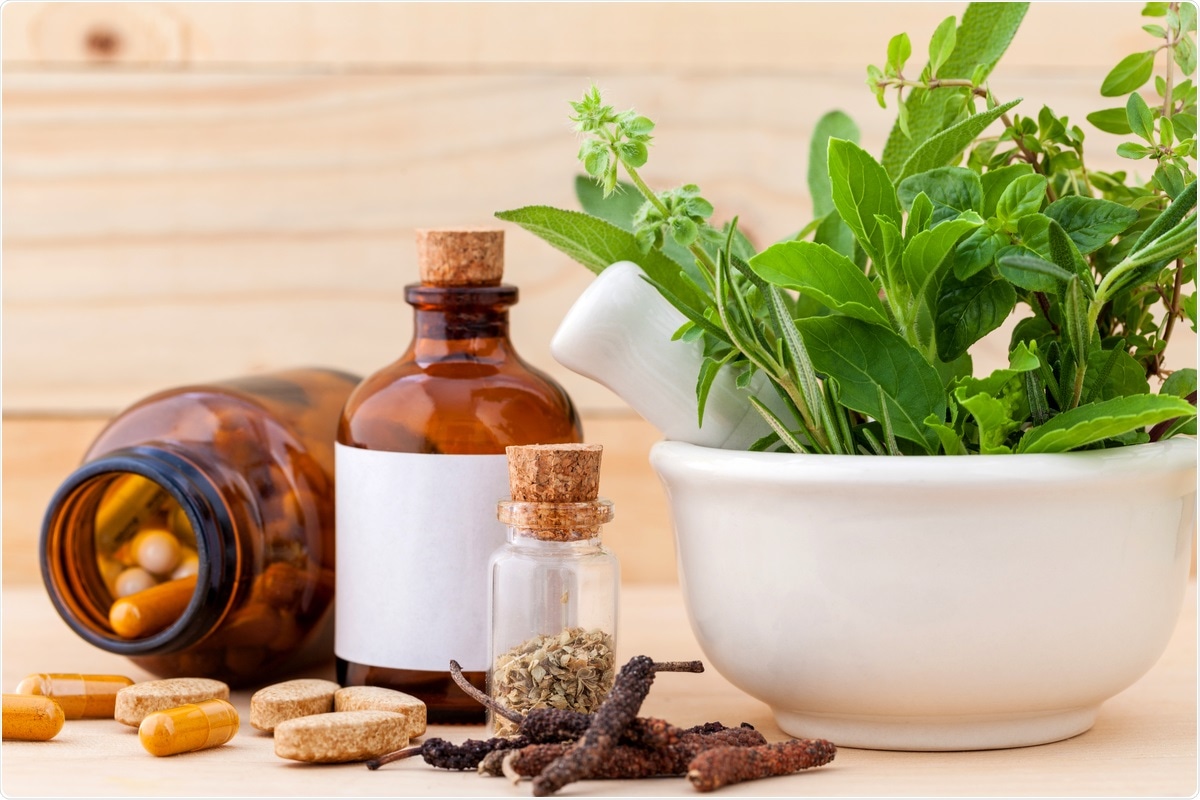The angiotensin-converting enzyme 2 (ACE2) receptor has a high affinity for the spike (S) protein of the severe acute respiratory syndrome coronavirus 2 (SARS-CoV-2), which is the virus implicated in the ongoing coronavirus disease 2019 (COVID-19) pandemic.
Since the SARS-CoV-2 receptor-binding domain (RBD) strongly interacts with the ACE2 receptor, ACE2 could be a promising drug target for impeding viral invasion into the host cells.

Study: Virtual Screening of Natural Chemical Databases to Search for Potential ACE2 Inhibitors. Image Credit: Kerdkanno / Shutterstock.com
About the study
In a recent Molecules study, researchers were interested in identifying potential ACE2 inhibitors through a virtual screening protocol. To this end, molecular docking was used to screen ChemDiv, TargetMol, and InterBioScreen, all of which are natural product databases, whereas molecular mechanics-generalized Born surface (MM-GBSA) was used to assess the binding affinity of these compounds to ACE2.
Additionally, the authors also studied the absorption, distribution, metabolism, and excretion (ADME) properties of the chemicals to assess their drug-likeness. Molecular dynamics (MD) simulations were implemented to explore the binding modes between the highest-potential compounds and ACE2.
Study findings
Catechin (154-23-4), which is a polyphenolic compound, was the first natural product identified by the researchers. This compound, which is derived from in the bark and twigs of plants, is associated with antioxidant, anti-inflammatory, antimicrobial, and anticancer properties.
Catechin also possesses antiviral activity, as its 50% effective concentration (EC50) against the influenza A(H1N1) virus was found to be 18.4 µg/mL. Catechin also strongly interacted with ACE2 receptors, which has a Glide score of −5.418 and ∆G value of −37.592 kcal/mol.
Penicillin V Potassium (132-98-9) was the second natural product found to offer therapeutic benefits against bacterial infections, in addition to its ability to adequately bind to the ACE2 receptors. This compound was associated with a Glide score of −4.335 and ∆G value was −18.899 kcal/mol.
Quinic acid (53429), which is a widely presented natural compound found in plants, was the third natural ingredient identified with potent ACE2 receptor inhibition. This compound acts as an antioxidant, can increase urinary excretion, and promotes DNA repair and immunity. Quinic acid showed a good affinity for ACE2 receptors with four hydrogen-bonding linkages and was found to have a Glide score of −5.923 and ∆G value of −19.312 kcal/mol.
The fourth natural compound, with antioxidant, anti-inflammatory, and antibacterial properties was arbutin (07141), which originates from the bearberry plant. Arbutin shows affinity towards ACE2 receptor with a Glide score of −4.898 and ∆G value of −27.518 kcal/mol.
Taken together, catechin, quinic acid, Penicillin V Potassium, and arbutin all possess medicinal effects, including enhanced immunity, anti-inflammatory, and antibacterial properties, as well as strong binding capacities with ACE2.
MD simulations of these four compounds with ACE2 were conducted to determine the stability of these structures and their binding modes. To this end, Penicillin V Potassium changed its binding position in ACE2, whereas the conformation of arbutin and catechin remained stable. However, quinic acid could not sustain stability with ACE2.
On calculating the root mean square fluctuation (RMSF) for each compound, it was noted that the residues on binding catechin with ACE2 rendered higher RMSF values, which signified greater instability. The binding-free energy (∆Gbind) values suggested that catechin, Penicillin V Potassium, and arbutin bind well to ACE2.
However, the electrostatic interaction energy (∆Eele) of these three compounds was dissimilar. To this end, a higher positive value of the Penicillin V Potassium/ACE2 system was observed, as compared to negative values in the catechin/ACE2 and arbutin/ACE2 systems. Thus, the electrostatic interaction energy facilitated the binding of ligand and protein in the catechin/ACE2 and arbutin/ACE2 systems.
The polar solvation free energy enhanced ligand and receptor binding in the Penicillin V Potassium system; however, it was disadvantageous for the binding of ligand and protein in the remaining two systems. In addition, the contributions of amino acid residues, when mapped, exhibited no energy contribution in the catechin/ACE2 and arbutin/ACE2 systems. This was speculated to have occurred due to changes in the binding site in the Penicillin V Potassium/ACE2 system.
Nevertheless, the energy contributions of the catechin/ACE2 and arbutin/ACE2 systems’ amino acid residues depicted significant differences. This was likely due to the difference in hydrogen bonds in different systems.
Conclusions
The present study identified four natural compounds with known medicinal effects that had a strong binding affinity to ACE2 receptors. The target therapeutic model was ACE2 inhibition to prevent SARS-CoV-2 invasion.
From the results of the MD simulations, it was inferred that catechin and arbutin are the most promising candidates, whereas Penicillin V Potassium conferred binding site alterations and quinic acid had unstable binding with ACE2 receptor. Further research is needed to determine the efficacy of catechin and arbutin in the management of COVID-19.